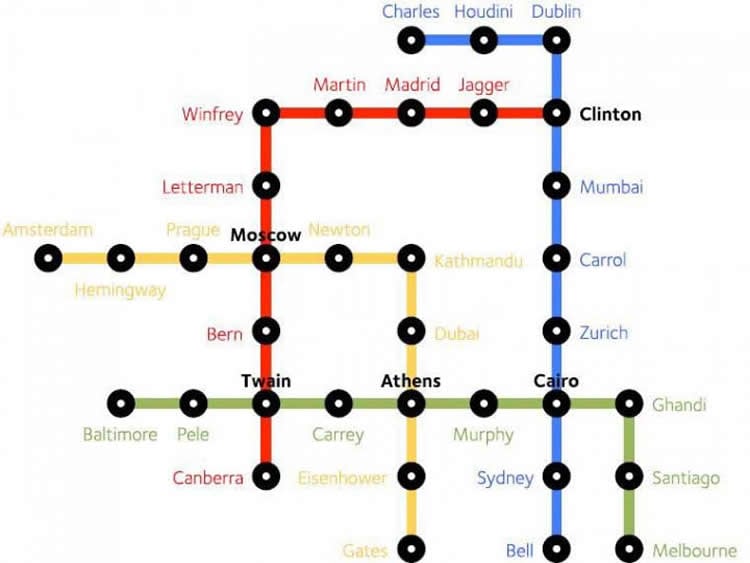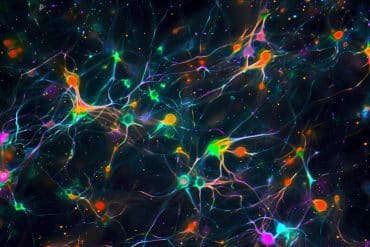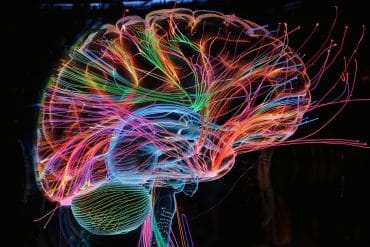Summary: Researchers investigate how the human brain implements hierarchical structures in order to design more clever algorithms for machine learning.
Source: Cell Press.
In machine learning, a programmer might develop an AI that can calculate all possible consequences of a single action. Humans, however, don’t have the same raw computational power; we have to efficiently create and execute a plan. We mentally invent different “layers” to organize our actions and then think about the higher levels rather than individual steps, according to a Neuron study from members of Google DeepMind and the University of Oxford publishing May 18.
“The idea is basically to understand how humans or animals make long-term decisions,” says Jan Balaguer, a PhD student at University of Oxford and member of Google DeepMind. “We’re interested in trying to find machine-learning solutions to difficult tasks and real-life problems. Quite often it can be useful to draw inspiration from neuroscience.”
Balaguer and his colleagues used a navigational game as a proxy to decode the human brain’s decision-making processes. On a virtual subway system analogous to the London Underground, each station stop represented an individual step, while the different colored subway lines represented a higher level of the hierarchy. Twenty-two participants were trained on the game and then given a destination station as a goal, and played while in an fMRI scanner.
The researchers examined whether participants focused more on the subway lines or on the individual stations while navigating in the game. The team found that, generally, brain activity and response time increased with the number of line changes standing between participants and their destinations, rather than with the number of stations themselves. The areas in the brain linked to this type of decision making were the dorsal portion of the medial prefrontal cortex, which is known to support higher cognitive functions such as planning, and the premotor cortex, which is more involved in the execution of real or imaginary movements.

“We show, in a more straightforward and direct manner than previous studies, that there are hierarchical representations reflected in the brain,” says Balaguer.
However, there were some parts of the brain that became more active as participants inched closer to achieving their goal, with fewer stations left on a single line: the ventromedial prefrontal cortex and the hippocampus. In previous work, the hippocampus has been shown to react to proximity to a given goal.
Overall, Balaguer says, “We want to see how the human brain implements things like hierarchical structures in order to design more clever algorithms. In machine learning, having a hierarchical representation for decision making might be helpful or harmful depending on whether you choose the right hierarchy to implement in the first place.”
Funding: Funding was provided by the European Research Council.
Source: Karen Zusi – Cell Press
Image Source: This NeuroscienceNews.com image is credited to Balaguer et al./Neuron 2016.
Original Research: Full open access research for “Neural Mechanisms of Hierarchical Planning in a Virtual Subway Network” by Jan Balaguer, Hugo Spiers, Demis Hassabis, and Christopher Summerfield in Neuron. Published online May 17 2016 doi:10.1016/j.neuron.2016.03.037
[cbtabs][cbtab title=”MLA”]Cell Press. “How Your Brain Learns to Ride the Subway.” NeuroscienceNews. NeuroscienceNews, 18 May 2016.
<https://neurosciencenews.com/ai-brain-algorithm-navigation-4249/>.[/cbtab][cbtab title=”APA”]Cell Press. (2016, May 18). How Your Brain Learns to Ride the Subway. NeuroscienceNews. Retrieved May 18, 2016 from https://neurosciencenews.com/ai-brain-algorithm-navigation-4249/[/cbtab][cbtab title=”Chicago”]Cell Press. “How Your Brain Learns to Ride the Subway.” NeuroscienceNews.
https://neurosciencenews.com/ai-brain-algorithm-navigation-4249/ (accessed May 18, 2016).[/cbtab][/cbtabs]
Abstract
Neural Mechanisms of Hierarchical Planning in a Virtual Subway Network
Highlights
•Humans represent plans in a hierarchical fashion, over contexts as well as states
•Hierarchical plan complexity is encoded in caudal prefrontal cortex
•Ventromedial prefrontal cortex and hippocampus encode proximity to a goal state
•The current context can be decoded from the dorsomedial prefrontal cortex
Summary
Planning allows actions to be structured in pursuit of a future goal. However, in natural environments, planning over multiple possible future states incurs prohibitive computational costs. To represent plans efficiently, states can be clustered hierarchically into “contexts”. For example, representing a journey through a subway network as a succession of individual states (stations) is more costly than encoding a sequence of contexts (lines) and context switches (line changes). Here, using functional brain imaging, we asked humans to perform a planning task in a virtual subway network. Behavioral analyses revealed that humans executed a hierarchically organized plan. Brain activity in the dorsomedial prefrontal cortex and premotor cortex scaled with the cost of hierarchical plan representation and unique neural signals in these regions signaled contexts and context switches. These results suggest that humans represent hierarchical plans using a network of caudal prefrontal structures.
“Neural Mechanisms of Hierarchical Planning in a Virtual Subway Network” by Jan Balaguer, Hugo Spiers, Demis Hassabis, and Christopher Summerfield in Neuron. Published online May 17 2016 doi:10.1016/j.neuron.2016.03.037






